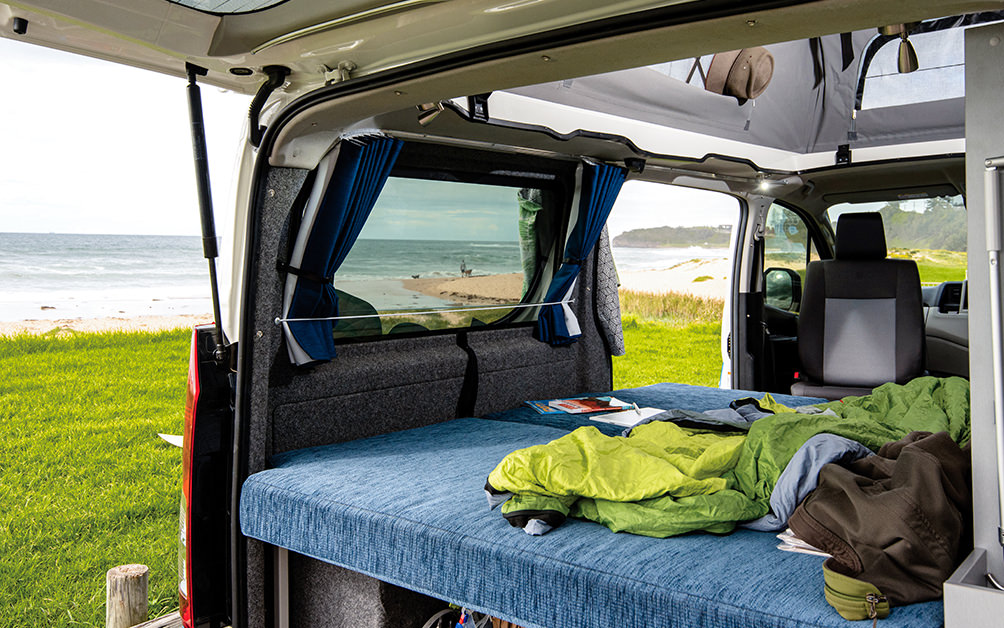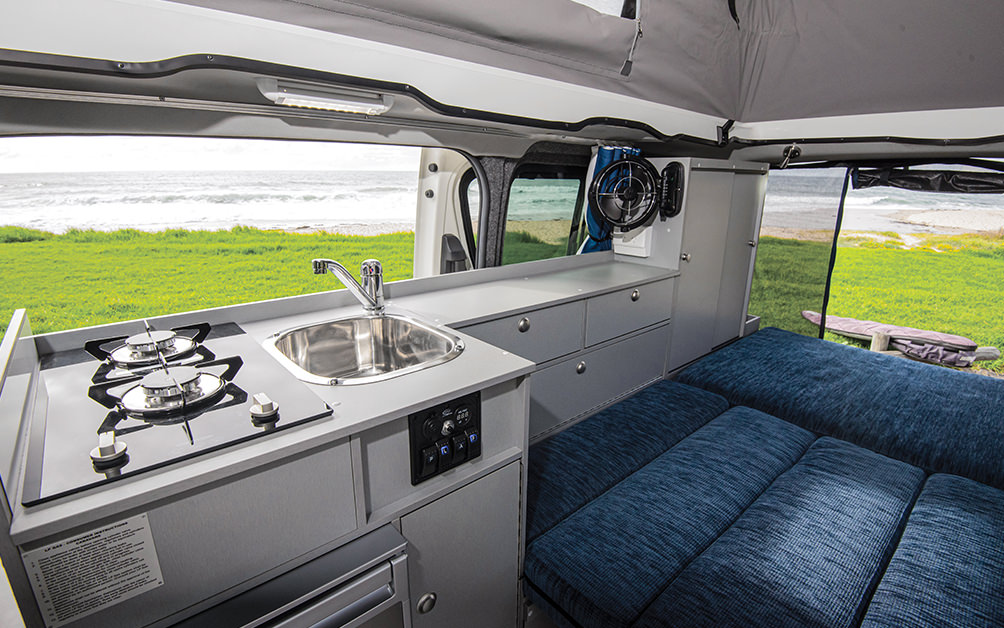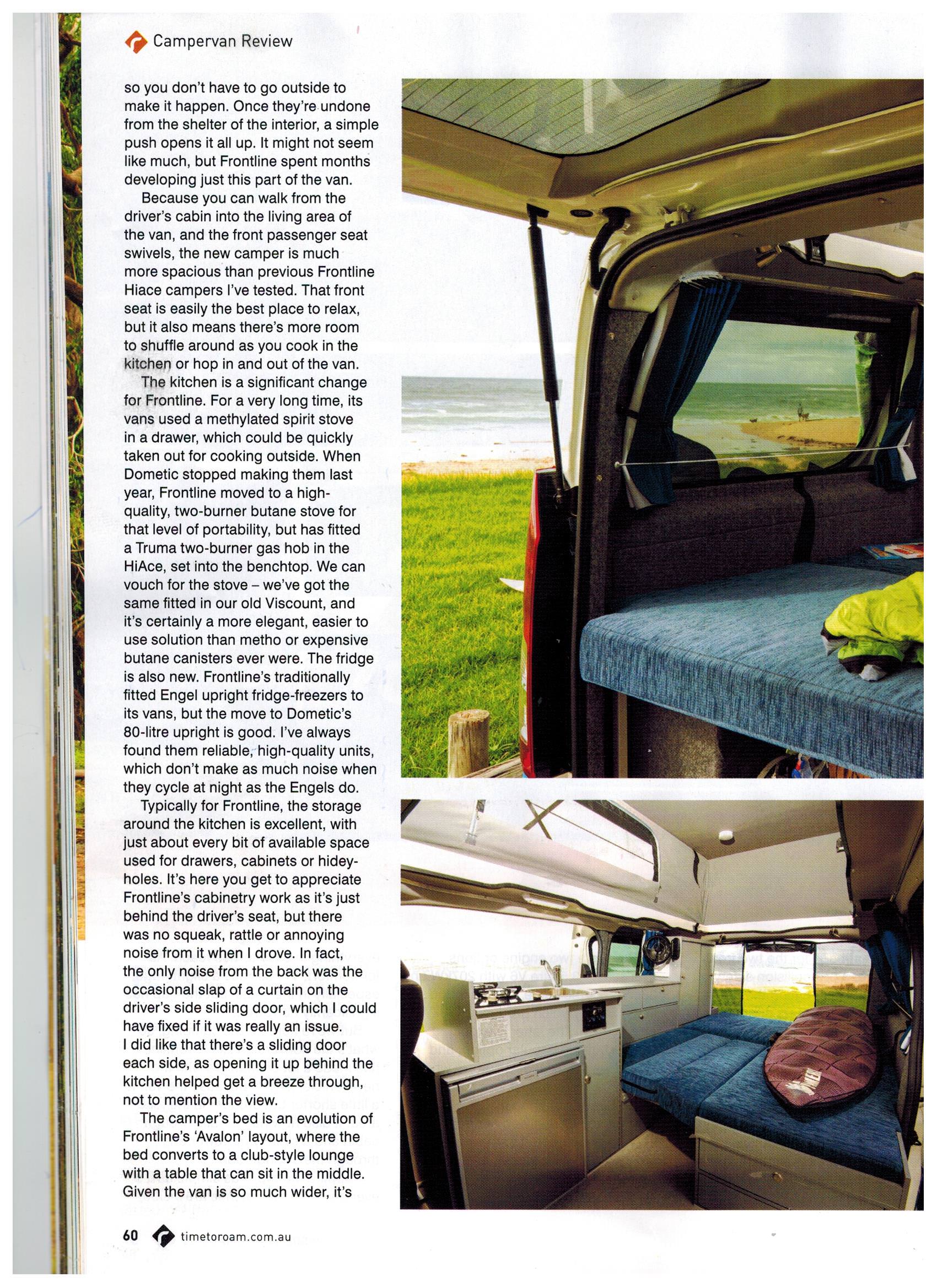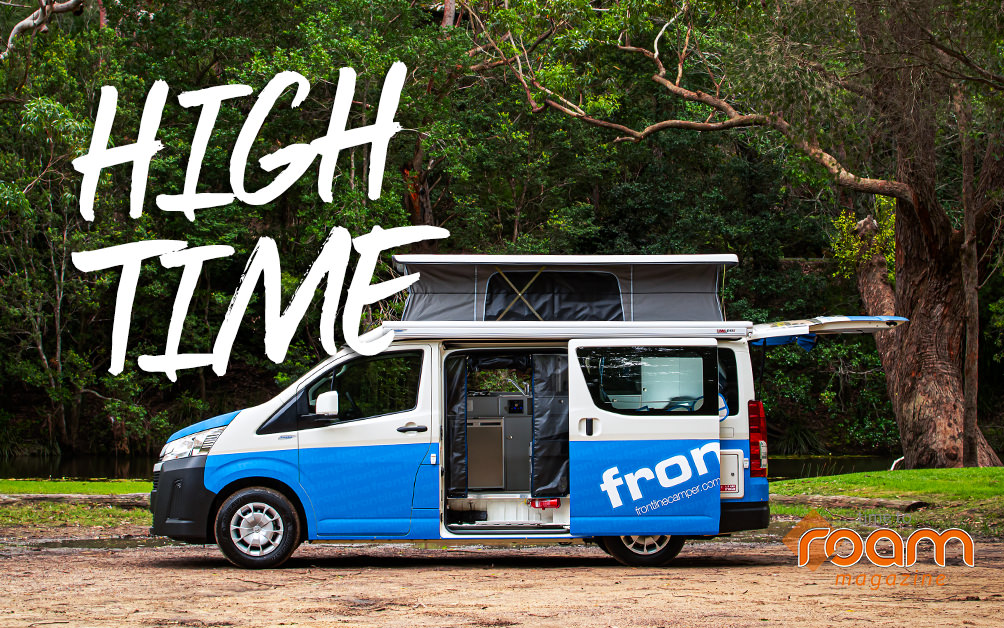We’ve been waiting a while, but the new Toyota HiAce campervan from Frontline was worth it.
Toyota knows how to keep a crowd waiting. When the latest HiLux was launched in 2015, it had been 11 years since the last new one. The LandCruiser 200 Series has been on sale since 2008. But the previous HiAce takes the cake — it was on sale for 15 years before being updated late in 2019. It had been around so long only a few campervan manufacturers were still working with the platform. The rest had moved to more modern vehicles like the Hyundai iLoad or tried-and-tested VW Transporter.
But not Frontline. Until the very end, its HiAce camper conversions had found a dedicated market of travellers who didn’t need flash. They just wanted comfortable, dependable and unassuming recreational vehicles that didn’t cost the earth. Now that there is a new HiAce, Frontline has spent the last eight months developing a new range of campers to suit. Over two days exploring the south coast, I checked out the first version, a two-seater with a semi-permanent bed.
Toyota had 15 years of technology and consumer sentiment on safety to consider. The new Toyota HiAce H30 6 Gen Campervan is significantly better than the outgoing model. No more do you sit over the engine and rely on the slimmest of vehicle crumple zones for safety. With the engine out the front and a slew of other upgrades, the new van attained a five-star ANCAP safety rating (the current VW Transporter — the T6 — hasn’t been tested, but the T5 was rated four stars). But it’s more than just a bit of extra cushioning. Each Hiace comes with seven airbags for the two front passengers, a pre-collision safety system capable of hitting the brakes if you fail to, blind-spot monitoring and even a road sign recognition function that warns you if you’ve gone past a sign faster than it indicates. A friendly voice reminds you to obey local road regulations. Above that, the model I tested has an active lane-keeping function that turns the vehicle back into its lane if I let it drift out. It feels like getting hit by a gust of wind, but it works.




There are two engine options available; a 3.5-litre V6 with 207kW and 360Nm, or the same 2.8-litre found in the HiLux, which produces 130kW and 450Nm.
The latter is expected to be the more popular option, and paired with a six-speed auto, is what I’m testing. It used just less than 11L/100km while I had it.
To drive, it’s pretty good, especially compared to the older commercial model. In the cabin, it’s quiet and smooth, and a modern dash and steering wheel puts everything within easy-to-use reach. As for comfort, VW still has a slight edge, especially in the seats, but the gap has significantly narrowed.
But we’re here for the camping, so what’s the conversion like? Frontline has made many changes with the new vehicle, mainly because the van is slightly shorter but broader in the load area. It also has a walk-through cabin and a narrower entry through the sliding door.
Popping the top is as simple as it’s ever been. All the catches are inside, so you don’t have to go outside to make it happen. Once they’re undone from the interior shelter, a simple push opens it all up. It might not seem like much, but Frontline spent months developing just this part of the van.
Because you can walk from the driver’s cabin into the living area of the van, and the front passenger seat swivels, the new camper is much more spacious than previous Frontline Hiace campers I’ve tested. That front seat is easily the best place to relax, but it also means there’s more room to shuffle around as you cook in the kitchen or hop in and out of the van.
The kitchen is a significant change for Frontline.
For a long time, its vans used a methylated spirit stove in a drawer, which could be quickly taken out for cooking outside. When Dometic stopped making them last year, Frontline moved to a high-quality, two-burner butane stove for that portability but has fitted a Truma two-burner gas hob in the HiAce, set into the benchtop. We can vouch for the furnace — we’ve got the same held in our old Viscount, and it’s certainly a more elegant, easier-to-use solution than metho or expensive butane canisters ever were. The fridge is also new. Frontline’s traditionally fitted Engel upright fridge-freezers to its vans, but the move to Dometic’s 80-litre upright is good. I’ve always found them reliable, high-quality units, which don’t make as much noise when they cycle at night as the Engels do.




Typically for Frontline, the storage around the kitchen is excellent, with just about every available space used for drawers, cabinets or hidey-hole.
It’s here you get to appreciate Frontline’s cabinetry work as it’s just behind the driver’s seat, but there was no squeak, rattle or annoying noise from it when I drove. The only noise from the back was the occasional slap of a curtain on the driver’s side sliding door, which I could have fixed if it was an issue. I did like that there’s a sliding door on each side, as opening it up behind the kitchen helped get a breeze through, not to mention the view.
The camper’s bed is an evolution of Frontline’s ‘Avalon’ layout, where the bed converts to a club-style lounge with a table that can sit in the middle. Given that the van is so much more expansive, it’s allowed the fitment of an extra cabinet down the side, seen in former Vacationer and Adventurer models. Keeping it all very simple, the table and an extra timber square are all needed to fill the gap to make a bed. And the ample, flat space is much longer than I’ve managed to make it seem in the pictures (it’s at least 6’4″ because that’s how long my surfboard cover is.
There’s plenty of storage under the rear bed. Two drawers slide out neatly into the main entryway while various cushions lift to reveal more cabinets underneath. The back half of the bed sits over a boot, the largest dedicated storage area in the van. It’s big enough for camp chairs, extra awning walls or other bulky gear.
Although simplicity is evident throughout the camper, it’s still fitted with all modern needs.
A 100Ah battery sits under the bed, charged automatically when driving. It can be expanded to a second battery or with solar panels on the roof. Frontline specifies a 50-litre water tank, but hot water is only an option. That’s because hot water tanks are bulky and take 20 minutes to heat up, whereas you have to bring a kettle anyway. All the lights through the camper are LED, and there are USB charging points at the kitchen, along with 240-volt outlets for when you have power, At the back, there’s a cold-water shower, perfect for rinsing things off.
Overall, this is a great new camper. Too good, almost. For a few thousand dollars less, you can get a Frontline converted Volkswagen Transporter with the little, 103kW engine. Unless you wanted a specific layout that’s not yet available in the HiAce, there’s no way you’d bother. Even the more expensive 132kW VW doesn’t look quite the value this new model does. The safety, comfort, drive and layout of the new Toyota are just so good now that it’s a close game. For me, unless I needed AWD, I think the van from Japan is the best value camper in the range.
THE BASIC FEATURES
Frontline Toyota Hiace 6th Gen
CHASSIS
Vehicle — Toyota HiAce
Engine — 2.8-litre, turbo diesel
Transmission — 6-speed automated
Power — 130kW
Torque— 450Nm
Fuel Economy — Around 11L/100km
DIMENSIONS AND WEIGHTS
Length — 5265mm
Width — 1950mm
Height — 2065mm
Headroom — 1970mm
GVM — 3300kg
Towing — 1900kg
CAPACITIES
Water — 50L
Grey Water — Optional
Fridge — Dometic, 80 litres, compressor
Battery — 1 x 100Ah AGM
Fuel — 70L
WARRANTY
Toyota —5 years, 160,000km
Frontline conversion — 2 years
From $72,000 drive-away. As tested
(diesel, auto) from $78,000 drive away.





Credit: Time to Roam
